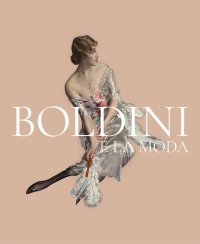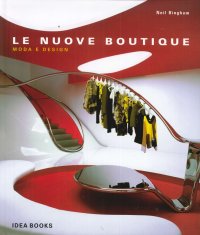Boldini e la Moda.
Ferrara, Palazzo dei Diamanti, February 16 - June 2, 2019.
Edited by Barbara Guidi and Guidi B.
Translation by Archer M.
Contributions by Virginia Hill.
Ferrara, 2019; bound, pp. 296, b/w and col. ill., cm 24x28.
cover price: € n.d.
|
Books included in the offer:
Boldini e la Moda.
Ferrara, Palazzo dei Diamanti, February 16 - June 2, 2019.
Edited by Barbara Guidi and Guidi B.
Translation by Archer M.
Contributions by Virginia Hill.
Ferrara, 2019; bound, pp. 296, b/w and col. ill., cm 24x28.
FREE (cover price: € n.d.)
Le nuove boutique. Moda e design
Translation by Barcatta L.
Viareggio, 2005; bound, pp. 189, col. ill., col. plates, cm 24,5x29.
FREE (cover price: € 43.00)
Donna. Immagini del femminile da Boldini a oggi
Pescara, Museo d'Arte Moderna Vittoria Colonna, October 20, 2005 - January 23, 2006.
Milano, 2005; paperback, pp. 120, ill., cm 23x27.
(Biblioteca d'Arte).
FREE (cover price: € 28.00)
Miss Bell. Un dipinto di Giovanni Boldini nel Museo delle raccolte Frugone di Genova
Edited by Giubilei M. F. and Maione S.
Illustrations by Scuderi L.
Montecatini Terme, 2007; paperback, pp. 40, ill., cm 15x21.
(Sogno Intorno all'Opera. 8).
FREE (cover price: € 12.00)
Alta Moda, Grande Teatro
Torino, Venaria Reale, March 29 - September 14, 2014.
Edited by Capella M.
Torino, 2014; bound, pp. 184, b/w and col. ill., tavv., cm 17,5x25.
FREE (cover price: € 22.00)
The Making of Hispano-Flemish Style. Art, Commerce, and Politics in Fifteenth-Century Castile
Kasl R.
Brepols Publishers
English Text.
Turnhout, 2014; hardback, pp. 300, ill., cm 24x30.
(Me Fecit).
series: Me Fecit
ISBN: 2-503-54624-2 - EAN13: 9782503546247
Subject: Painting,Sculpture
Period: 1400-1800 (XV-XVIII) Renaissance
Languages: 
Weight: 1.48 kg
The adoption of northern forms in Castile, first detected in the sculptural decoration of funerary chapels of the mid-1430s, was sustained for the rest of the century, culminating in the completion of the monastery of Miraflores under the patronage of Isabel of Castile. Chapter three outlines the religious, commemorative, and political motives that informed the foundation of the monastery by Juan II and those that animated his daughter's efforts to complete it. It establishes the chronology of works in relation to historical events and details the intervention of Juan and Simón de Colonia, Gil de Siloe, Juan de Flandes, and others. The reelaboration of Siloe's northern European sculptural idiom at Miraflores was a distinctive process, stimulated by the demands of his royal patron, conditioned by the practices of a heterogeneous workshop, and obliged to visualize a new concept of royal sovereignty.













